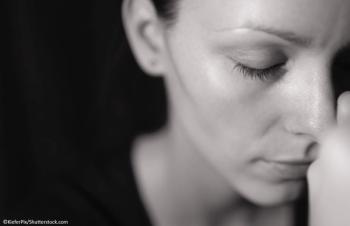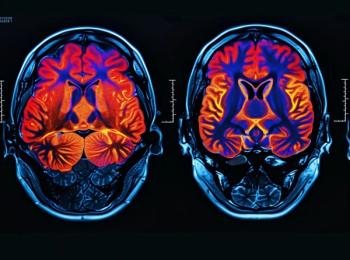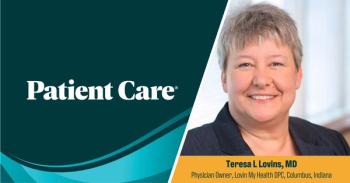
Pregnancy and Birth Spur Anxiety Dreams in Mom
MONTREAL -- Vivid dreams of babies in peril are common to pregnant women and newly delivered mothers, often inspiring wakefulness and a postpartum need to check on the infant.
MONTREAL, Sept. 4 -- Vivid dreams of babies in peril are common among sleep-deprived pregnant women and new mothers, often inspiring a need to check on the infant.
Among post-partum women (new mothers and those who have other children), these dreams were accompanied by severe sleep disruption and motor activity, such as searching for the baby among the bed covers, Tore Nielsen, Ph.D., of the Hpital du Sacr-Coeur de Montral here, and Tyna Paquette, M.Sc., reported in the Sept. 1 issue of Sleep.
Pregnant women who had the disturbing dreams were likely to awaken crying, holding their abdomen, and acting out fears of delivery disasters, they said.
The prevalence of pregnancy and postpartum dreams about infants and the associated behaviors may reflect the emotional influence of maternal concerns or changes resulting from severe sleep disruption, rapid eye movement sleep deprivation, and altered hormone levels, the researchers said.
The study included 273 women in three groups: 202 postpartum (mean age 29.7; 95 primiparas, 107 multiparas); 50 pregnant (mean age = 31.1), and 21 null gravida (mean age = 28.5).
The women completed questionnaires about pregnancy and birth factors, personality, and sleep, and participated in interviews concerning the prevalence of recent infant dreams and nightmares, associated behaviors, anxiety, depression, and other psychopathologic factors.
The major findings:
- Most women (88%-91%) in all groups recalled dreams.
- Postpartum and pregnant women recalled infant dreams and nightmares with equal prevalence, but more postpartum mothers reported anxiety (75%) and the infant being in peril (73%) in their dreams than did pregnant women (59%, P<0.05 and 42%, P<0.0001).
- More postpartum mothers (63%) than pregnant women (40%) reported dream-associated behaviors (P<0.01), but neither group differed from the women who had never borne children (56%).
- Motor activity, the most prevalent behavior, occurred among twice as many mothers (57%) as pregnant women (24%) or null gravidas (25%) (all P<0.0001).
- In contrast, expressing emotion occurred more often among null gravida women (56%) than postpartum women (27%) (P<0.05) but was not significantly different from pregnant women (37%).
- Speaking out was equally prevalent among women in the three groups (12%-19%).
- Dream-associated behavior was associated with nightmares and dream anxiety. Among the postpartum mothers, many reported post-awakening anxiety (41%), confusion on awakening (51%), and a need to check on the infant (59.9%).
- Primiparas and multiparas differed in dream and nightmare recall but not in prevalence of dream-associated behavior.
A typical episode for a postpartum mother involved a dream that the infant has been lost in her bed. While dreaming, she searches through the covers, weeps openly, or speaks aloud. At times she may even touch or take hold of her bed partner while attempting to find the lost infant.
When fully awake, she realizes that her infant is not in the bed but she may still feel compelled to arise and confirm that the infant is sleeping safely.
Such behavior may reflect a mother's state of maternal vigilance, and it may even serve a functional role in infant care-giving, the researchers said. Or the behavior may be a sign of a disruptive sleep disturbance that interferes with maternal duties.
Pregnant women had similar types of anxiety dreams in which the focus was the unborn child and the possibility of birth complications, even the intense hallucinated presence of the unborn infant.
A woman's body goes through drastic changes during pregnancy, Dr. Nielsen said, and these changes, physical, hormonal, and emotional may be enough to affect sleep. Most pregnant women experience daytime fatigue even though they may get enough sleep, mainly because the quality tends to be worse.
Finally, the researchers said, they were surprised to learn that 10 of 119 (7.6%) new mothers queried about their spouses' experience reported that the men had one or more dream-associated activities concerning the infant. Episodes ranged from sleep-talking to searching for the infant in bed or walking while carrying a pillow believed to be the infant.
It is possible, Dr. Nielsen said, that psychological or socioemotioanal factors may be enough to trigger most of the dreams during pregnancy or the post-partum weeks.
However, other factors to be considered for new mothers are the severe sleep disruption, as well as REM sleep deprivation, they undergo in the postpartum period.
Another contributing factor is the fluctuation in hormones, such as oxytocin, prolactin, and vasopressin. It is possible that these hormones, or their influence on other processes such as breast sensation during sleep, affect the form, intensity or content of dreams.
Finally, Dr. Nielsen said, various psychopathologic influences may play a part, such as insecure attachment.
Closer study of fathers and of parents who adopt infants may help clarify whether hormonal or socioemotional factors are more critical in producing the phenomenon, the researchers said.
Further research, they said, may help shed light on the significance of disturbed dreaming in a variety of medical conditions characterized by both intense emotional stress and severe sleep disruption.
Newsletter
Enhance your clinical practice with the Patient Care newsletter, offering the latest evidence-based guidelines, diagnostic insights, and treatment strategies for primary care physicians.

































































































































































































































































































